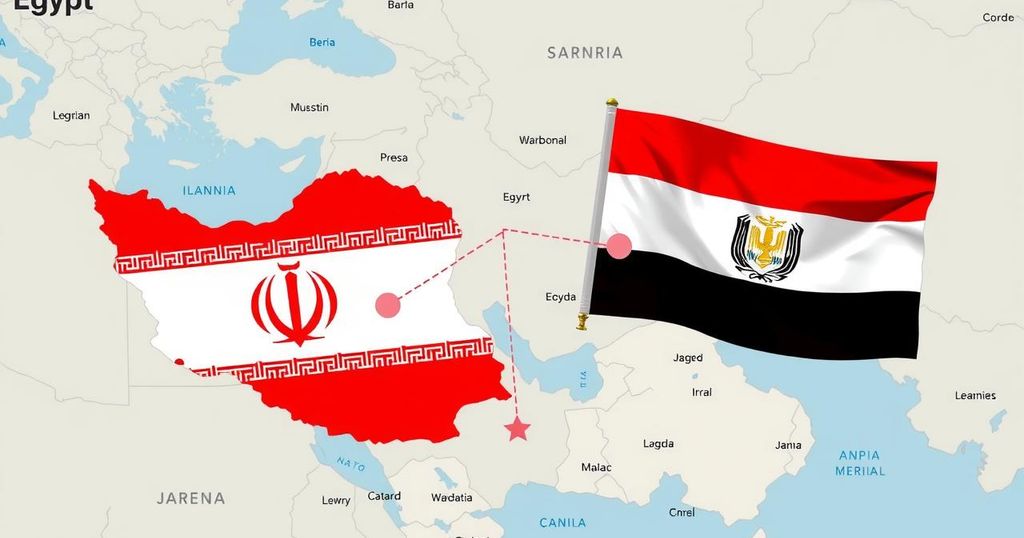The Evolving Dynamics of Iran-Egypt Relations: A New Era on the Horizon
The recent visit of Iranian President Masoud Pezeshkian to Cairo signifies a potential thaw in Iran-Egypt relations after decades of strained ties dating back to the 1979 Islamic Revolution. Historically polarized, these nations are exploring the prospect of renewed diplomacy amidst changing regional dynamics, reflecting a growing willingness to overcome past grievances.
The recent visit of Iranian President Masoud Pezeshkian to Cairo for the D-8 Organization for Economic Cooperation Summit marks a notable development in Iran-Egypt relations. This instance represents the first visit by a senior Iranian official to Egypt in over a decade, illuminating a potential turning point in their long-strained ties. Since the severance of diplomatic relations following the 1979 Islamic Revolution, numerous attempts at rapprochement have occurred, yet definitive diplomatic normalization has remained elusive.
Historically, the relationship between Iran and Egypt can be segmented into two distinct phases: prior to and following the Islamic Revolution. Initially, Iran, under Shah Mohammad Reza Pahlavi, aligned with the United States and Israel, leading to heightened tensions with Arab nations, particularly Egypt led by Gamal Abdel Nasser, who espoused pan-Arabism as a means to unify Arab states and oppose Western influence. This ideological split intensified following the 1979 revolution, which radically shifted Iran’s foreign policy towards supporting Palestinian causes and opposing Egypt’s realignment with Israel.
The subsequent decades further entrenched the divide between the two nations, particularly during the Iran-Iraq War when Egypt backed Iraq. Nevertheless, during the presidential tenure of Mohammad Khatami from 1997 to 2005, a thawing in relations was observed, fostered by mutual economic interests. This slow reconciliation process continued but faced setbacks with differing international agendas during subsequent administrations.
The recent visit by Pezeshkian has sparked optimism in Iranian media regarding the possibility of a renewed dialogue. Both nations, especially under the influence of shifting regional dynamics post-Saudi-Iran rapprochement, now appear poised to explore a resurgence in formal diplomatic relations. Furthermore, there is a growing consensus among officials from both governments to pursue the reopening of embassies and establish stable ties.
While historical grievances continue to cast a shadow over interactions, the evolving geopolitical landscape emphasizes the necessity for a diplomatic breakthrough, which could lead to substantial benefits for both countries as they navigate the complexities of contemporary Middle Eastern politics.
The strained relationship between Iran and Egypt can be traced back to the 1979 Islamic Revolution in Iran, which led to a severance of diplomatic ties that have not been fully restored to this day. The pre-revolution period saw Iran as a strategic ally of the West, contrasting sharply with Egypt’s revolutionary shift towards pan-Arabism and opposition to Western influence. The ensuing decades have seen fluctuating relations marked by ideological clashes and alignments during key geopolitical events. Recent developments, such as the visit of Iranian President Pezeshkian to Cairo, reflect a potential thaw in these frigid relations, influenced by a changing regional landscape.
In conclusion, the visit of President Pezeshkian represents a pivotal moment in Iran-Egypt relations, potentially signaling the dawn of a new chapter in bilateral interactions after decades of estrangement. While significant challenges remain stemming from historical animosities and divergent political agendas, there exists a mutual willingness to explore collaboration and restore diplomatic ties. The evolving geopolitical context underscores the importance of this engagement for both nations and the broader Middle Eastern region.
Original Source: www.tehrantimes.com




Post Comment